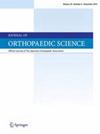“Does advanced imaging improve the reliability of 2018 AO/OTA classification for trochanteric femoral fractures?”
IF 1.4
4区 医学
Q3 ORTHOPEDICS
引用次数: 0
Abstract
Background
The influence of advanced imaging modalities on the reliability of 2018 AO/OTA classification and detection of features contributing to fracture instability have not been adequately studied in the literature.
Methods
This prospective study was conducted to assess the reliability of 2018 AO/OTA classification for trochanteric femoral fractures, and features of instability in 50 patients using radiographs, multiplanar reformats (MPR), and 3D-reconstruction with fracture segmentation (3DR-FS) by 3 observers on 2 occasions at an interval of 4 weeks.
Results
Mean inter-observer reliabilities on radiographs, MPR, 3DR-FS were 0.36, 0.39, 0.46 after first reading, and 0.35, 0.35, 0.44 after second reading respectively. The mean intra-observer reliabilities for radiographs, MPR, 3DR-FS were 0.36, 0.43, and 0.50 respectively. Inter-observer reliabilities on subgroup analysis were 0.35, 0.27, 0.40 for subgroup A1 and 0.19, 0.22, and 0.30 for subgroup A2 on radiographs, MPR and 3DR-FS respectively. All results were statistically significant (p-value <0.05). Posterior comminution was detected in 125(41 %), 247(82 %), and 255 (85 %) out of total 300 instances on radiographs, MPR and 3DR-FS respectively. Coronal split was detected in 113(37 %), 189(63 %), and 242 (80 %) out of total 300 instances on radiographs, MPR, and 3DR-FS respectively. Flexion of the proximal fragment was detected in 106(35 %), 163(54 %), and 180 (60 %) out of total 300 instances on radiographs, MPR, and 3DR-FS respectively. Lateral wall fracture was detected in 45(15 %), 80(26 %), and 138 (46 %) out of total 300 instances on radiographs, MPR, and 3DR-FS respectively. The banana fragment was detected in 5(1 %), 16(5 %), and 83 (27 %) out of a total of 300 instances on radiographs, MPR, and 3DR-FS respectively.
Conclusions
2018 AO/OTA classification for trochanteric femoral fractures has ‘fair’ reliabilities on radiographs and MPR that improve to ‘moderate’ on adding 3DR-FS. We attribute it mostly to the difficulty in localizing innominate tubercle. Adding advanced imaging helps better detect fracture instabilities.
Level of evidence
Level I, Diagnostic.
“先进的成像技术是否提高了2018年AO/OTA分型对股骨粗隆骨折的可靠性?”
背景:文献中尚未充分研究先进成像方式对2018 AO/OTA分类和检测导致骨折不稳定特征的可靠性的影响。方法:本前瞻性研究采用3名观察人员,每隔4周进行2次x线片、多平面重构(MPR)和骨折分割3d重建(3DR-FS),评估2018年AO/OTA分型对股骨粗隆骨折的可靠性和不稳定性特征。结果:x线片、MPR、3DR-FS的平均观察者间信度一读分别为0.36、0.39、0.46,二读分别为0.35、0.35、0.44。x线片、MPR、3DR-FS的平均观察者内信度分别为0.36、0.43和0.50。亚组分析中,A1亚组的x线片、MPR和3DR-FS的观察者间信度分别为0.35、0.27、0.40,A2亚组的观察者间信度分别为0.19、0.22、0.30。结论:2018年AO/OTA对股骨粗隆骨折的分级在x线片和MPR上具有“一般”的可靠性,添加3DR-FS后MPR提高到“中等”。我们将其主要归因于难以定位无名结节。先进的成像技术有助于更好地检测裂缝的不稳定性。证据等级:一级诊断性。
本文章由计算机程序翻译,如有差异,请以英文原文为准。
求助全文
约1分钟内获得全文
求助全文
来源期刊

Journal of Orthopaedic Science
医学-整形外科
CiteScore
3.00
自引率
0.00%
发文量
290
审稿时长
90 days
期刊介绍:
The Journal of Orthopaedic Science is the official peer-reviewed journal of the Japanese Orthopaedic Association. The journal publishes the latest researches and topical debates in all fields of clinical and experimental orthopaedics, including musculoskeletal medicine, sports medicine, locomotive syndrome, trauma, paediatrics, oncology and biomaterials, as well as basic researches.
 求助内容:
求助内容: 应助结果提醒方式:
应助结果提醒方式:


